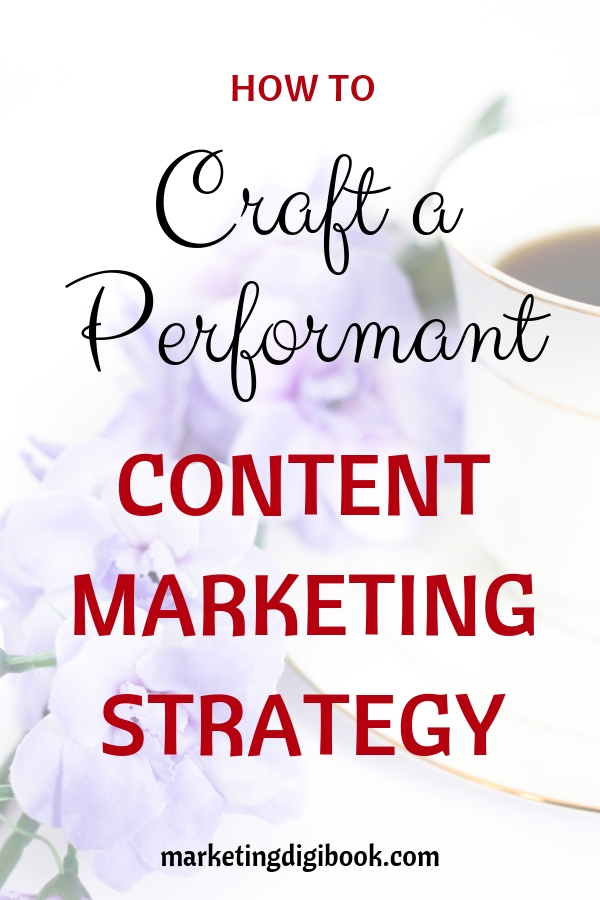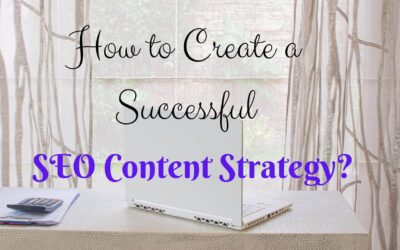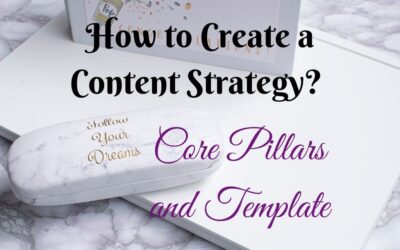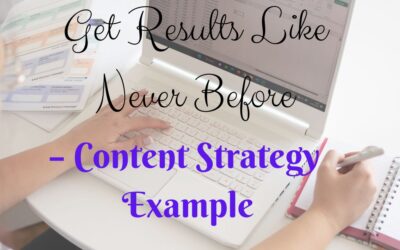The content strategy is like a magnetic compass, a roadmap, and a framework that you create to show you what content to create, for who, how, and when to reach your business goals. If you are wondering what are the steps of a content strategy you will find them below.
The steps of a content strategy are:
- Set your goals
- Define your Unique Selling Proposition (or what’s your distinctive element)
- Run a content audit
- Define your buyer persona(s)
- Define the metrics of your content strategy
- Create your content plan
- Create your content promotion plan
- Define the needed budget
Let’s Make Your SEO & Content Work Better for Your Business
Thus each company needs to develop a marketing strategy, that includes a content strategy.
If still in doubt that a documented content strategy is an absolute must here are some statistics. Content Marketing Institute and MarketingProfs in their research for 2023 called B2B Content Marketing 2023: Benchmarks, Budgets, and Trends report, found out that businesses with a documented content strategy slightly remains constant over the past years at about 40%. And as a direct consequence, just about 29% of the surveilled organizations consider themselves very successful with their content marketing.
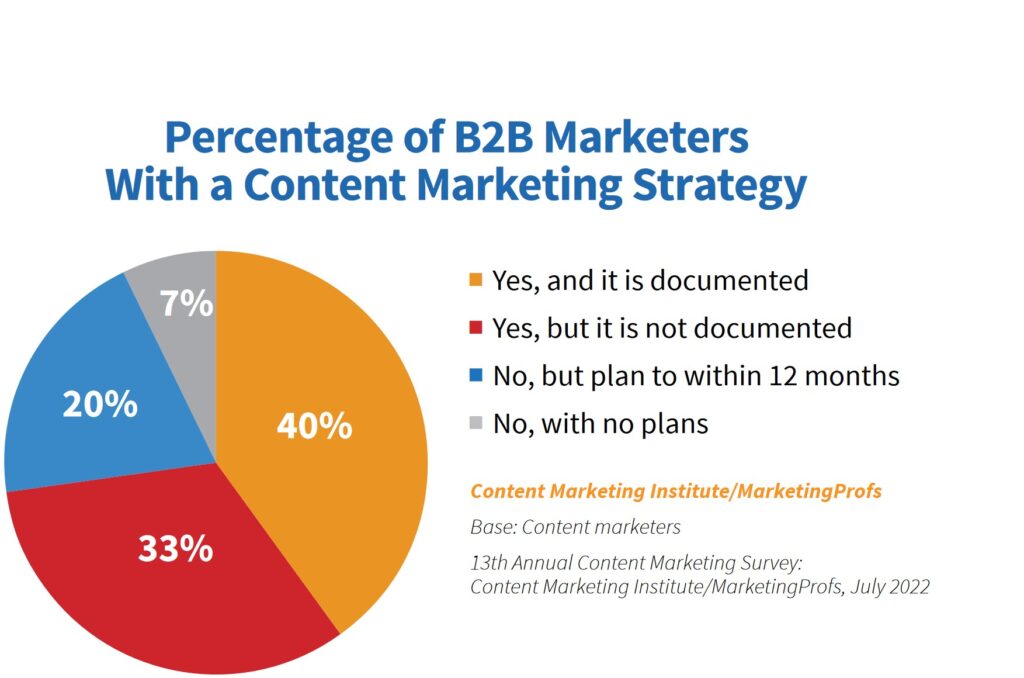
The purpose of this post is to define what are the steps of a content strategy framework based on which you can easily design your own content strategy. To face and beat the competition you absolutely need a solid content strategy in place. Check this simple content strategy template. Or if you feel you need help, hire a content strategist.
Sounds interesting?
Keep reading:
Now, conceiving content strategies is not as simple as it might seem, it implies time and sustained effort, Convince & Convert sustains that they need about 60 days to create a content strategy.
A content strategy gives directions and ensures that your resources, time, and money are spent for the purpose of reaching your own goals and expanding your business. This strategy will create the conditions to improve the distribution of your content, extend your audience, and attract new leads and customers.
In short, what are the steps of a content strategy? Here is the process to create it:
1. Starting Point: Set Your Goals.
What’s the aim of your content marketing? Knowing your why before starting will ease your job. This target, this purpose is the fundament of your strategy. Your goal might be:
* Increase organic traffic
* Increase brand awareness
* Generate more leads
* Increase the subscriptions to your newsletter
Establishing SMART (Specific, Measurable, Achievable, Realistic, Timely) content goals is important.
2. What’s Your Distinctive Element?
90% of the online content was created in the past two years. Every minute in the world is produced and consumed a huge amount of content, see the infographic below.
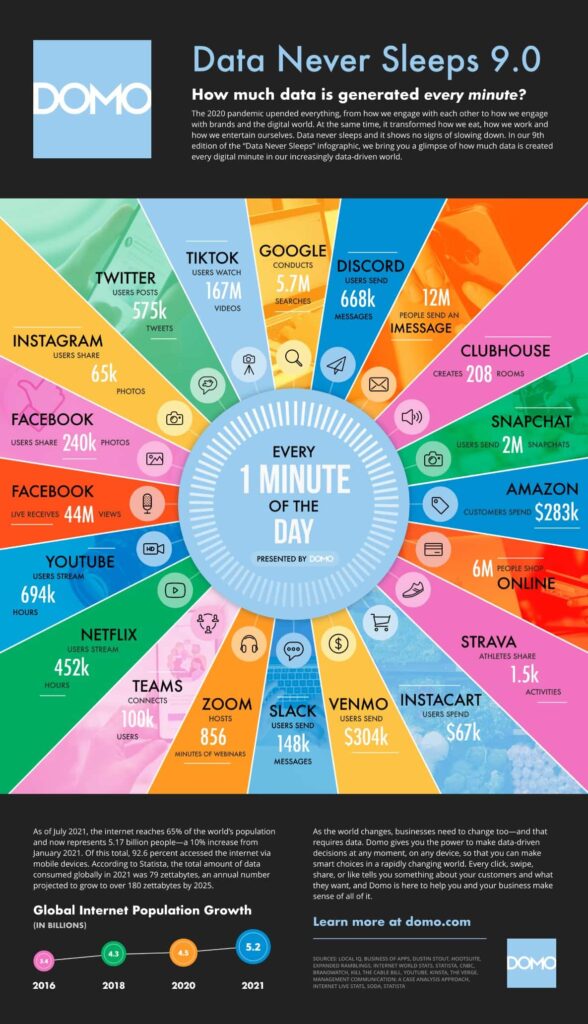
In this overwhelming ocean of content, which will be your competitive advantage? What will differentiate your content from that produced by your competition? Why would your target audience read your content? This is a rough challenge for content marketers, how do you stand out?
Some distinctive elements might be:
* Provide huge value
* Provide inspirational/motivational message
* Infuse storytelling
* High-quality visual content
* Humorous/satiric writing style
3. Run a Content Audit.
Before starting any strategy, an analysis or an audit of the existing situation is needed. Check on your past content creation efforts and see what results you had, which of your content was the most successful, what format it had, etc.
Go to check your Google Analytics and run an audit via a specialized tool like Ahrefs.
Analyze the performance of your content using BuzzSumo.
Profit on existing tools and verify how you stand with your marketing efforts, use a site grader like HubSpot’s Website Grader for example. Website Grader appreciates and grades the principal areas of your marketing, from blogs, and SEO to social media, and provides a detailed report with strengths and weak points and recommendations for improvement. The tool shows you some ways to improve your site’s SEO and may offer some interesting content ideas.
Take a look at the content produced by competition and influencers in your industry and check on its performance. Count on Ahrefs or SEMrush to reveal some insights.
4. Define the Metrics for Your Content Strategy
The metrics you will use to measure the results of your content strategy should be in accordance with your goals. If your goal refers to “leads” measure that, if your goal is “views”, again track that. If your scope is leads, then likes and social shares might not be exactly relevant.
Use relevant content marketing metrics to help you achieve your goals.
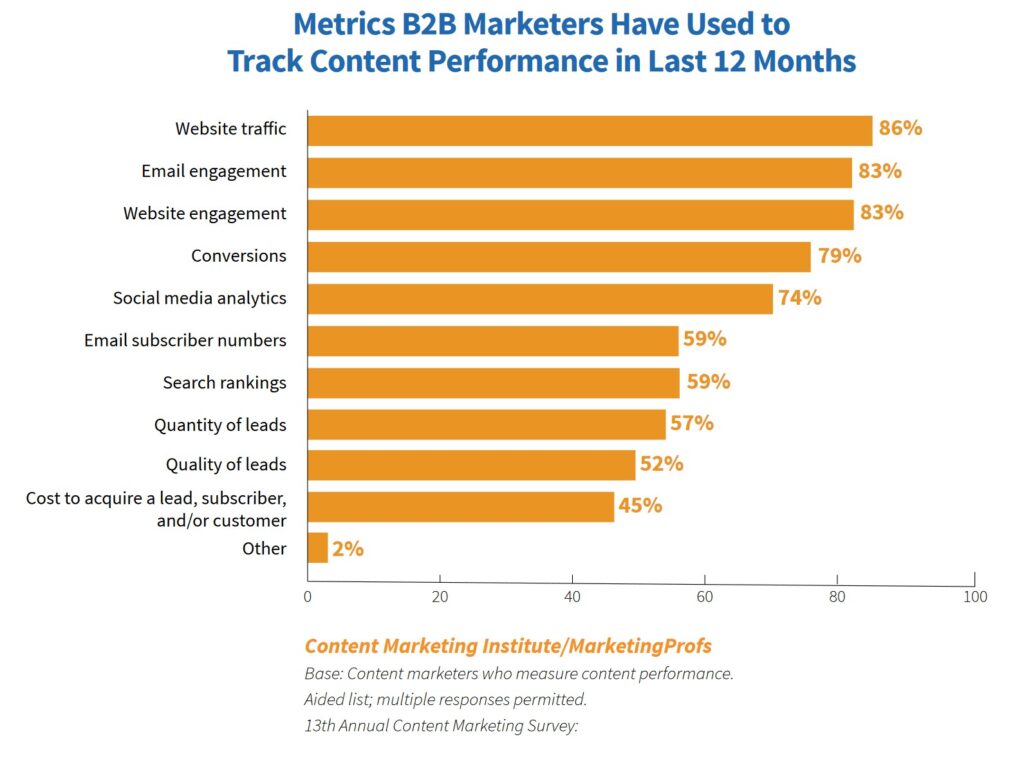
5. Define Your Buyer Personas
The objective settled will indicate who’s your target audience, your buyer personas, and the persons who are you writing for. You need to clearly establish and define who is your buyer personas, which are their characteristics (demographics, interests, scope, fears, etc), what problem they have and how can you solve it.
Use data mining, social media channels, and search to gather information and conduct face-to-face interviews with your clients. Also, ask your sales and customer service personnel for help in defining the buyer personas. The better you know them, the better content you can produce.
Knowing your audience’s needs and interests provides you with a valuable edge. Search for the keywords that your audience uses to ask her questions and use them in your content. Use tools like Answer the Public, Quora, Reddit, or Twitter Audience Insights to discover what are your readers searching and asking about and create the corresponding content.
Gather these needs for each persona and buyer’s journey stage and create a pool of content that is necessary.
6. The Core Part of Your Content Strategy Is the Content Execution Plan
By now you should know who you write for and what you should write. It’s time to brainstorm and establish the type of content needed for each buyer persona and journey stage. Answer the questions of each persona in each of the buyer’s journey stages. The challenge is to deliver the right content to the right person at the right time.
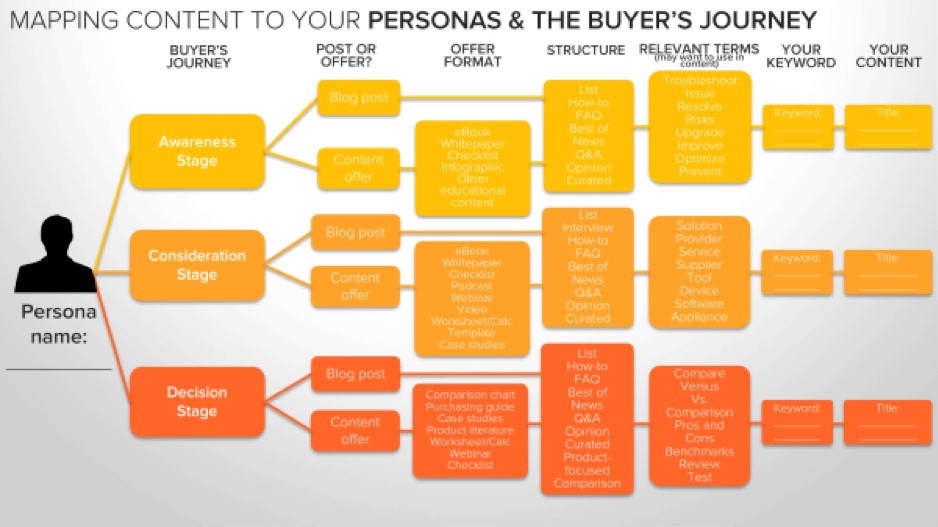
Generate valuable content ideas
Finding content ideas might be tricky sometimes. To get some inspiration and new suggestions check on some existing content generation tools that might be of help:
* BuzzSumo: From such a list, BuzzSumo could not be excluded. It rates popular content, displaying social shares and likes. So, you will have a good idea of content topics that have great chances to become popular.
* HubSpot’s Blog Topic Generator: Insert keywords, topics, or general terms, and after the tool makes its magic you will receive a list with blog post ideas.
* Feedly: A RSS feed that keeps you up to date with trends in your industry and can for sure drop you some juicy content ideas.
* Topic’s Blog Idea Generator: Insert Keyword, Get unique headlines and descriptions that are generated by GPT-3. Rank higher with unique content ideas!
Pick the content format to be used
Content can be presented for consumption in various forms. Nowadays the reader is in a continuous hurry and the content should be presented in an attractive form and easy to digest. This is the recipe to grab and keep his attention. Some of the most popular content formats to include in your content strategy are:
Blog posts
The most used and common format of the content is the blog post. To attract a new audience and keep your readers returning, you have to constantly publish new content. Posts, like all the content otherwise, should provide value for your readers and respond to their interests. From an SEO point of view, longer blog posts of more than 1000 words are preferred, but it’s better to keep an eye on your target audience’s preferences.
Ebooks
Ebooks are used in general as lead magnets. Generally, they are a long piece of content that potential clients download after completing a form with their contact details. Ebooks have a smaller publishing frequency and contain more in-depth knowledge relative to a certain subject.
Infographics are by far my favorites, especially when they have an elegant design. They are very attractive and visually appealing and extremely useful when you want to present a set of data in a simple, interesting way.
Templates
Templates are another very useful content format, as they provide high value for your readers and leads for your business. Templates are shortcuts that support your readers in their endeavors and save time for them.
Videos
Video is a type of format that rise significantly in the preferences of content consumers. They tend to be more engaging and are more shareable across social platforms. Producing them might require supplementary resources, but they are more likely to get more shares than other formats.
Podcasts
The podcast is an alternative format for persons that don’t like reading or don’t have the necessary time. As the number of podcast listeners is growing, this is a format to be considered if interesting interviews/talks can be arranged.
These are just the most frequent content formats, but there is a myriad of other format types. Here is a comprehensive list:
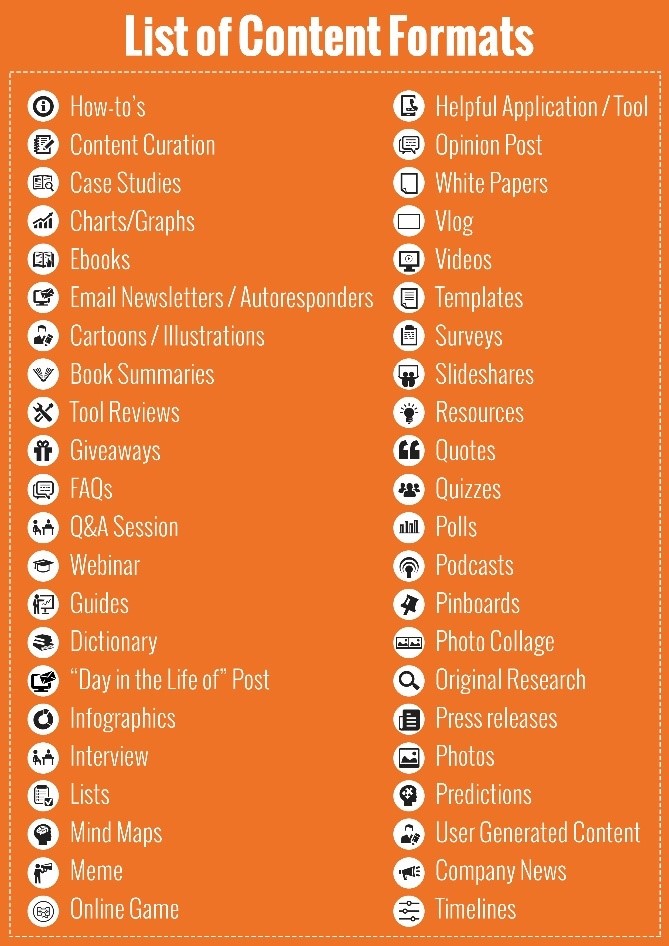
Then organize and put together a calendar for the content that will be created daily, weekly, and monthly.
Don’t forget to use call-to-actions to help your clients gauge what you want them to do next.
Let’s Make Your SEO & Content Work Better for Your Business
7. Create a Content Distribution Plan
To cite Jonathan Perelman “Content is king, but distribution is queen and she wears the pants.” You might have the greatest content in the world, but if no one sees it, it’s useless. So, just creating content of high quality is not enough, you should spread the word too and share it.
Create an editorial calendar and a social media calendar to promote and publish your content on other sites and platforms.
Draw a detailed action plan, with steps and timelines, to establish which content will be published where, and when. Optimize your content before publishing it on your site and on social media.
Insert in your content strategy paid ads campaigns if your budget allows it. If properly managed, this is a great way to increase your traffic.
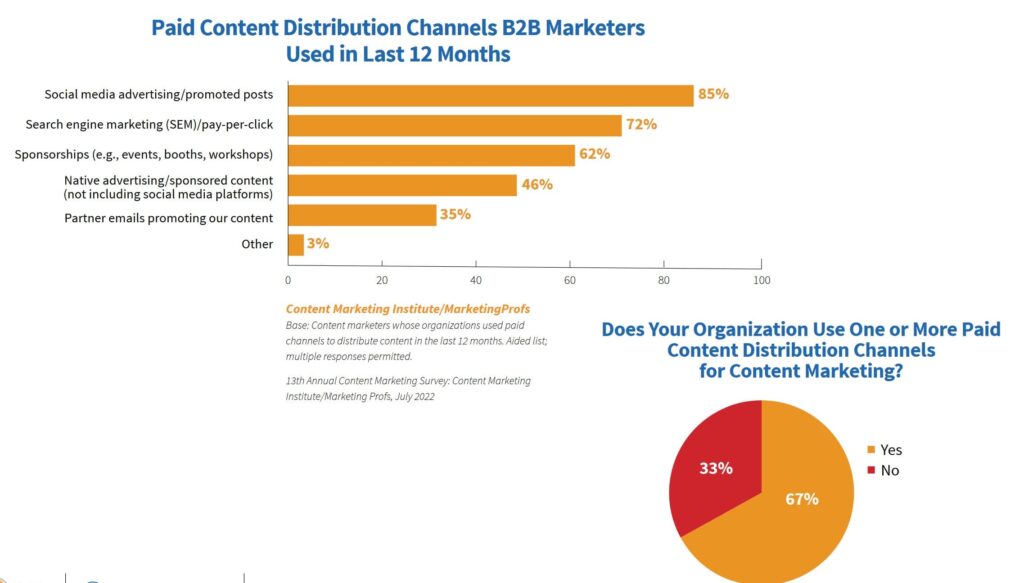
Source: ContentMarketingInstitute
Create connections with authoritative sites and influencers in your industry to boost your traffic and generate leads.
Schedule original content for guest posts.
8. Establish a Budget
Budget is an essential point that cannot be absent from any content strategy. According to the Content Marketing Institute study for 2023, just half of B2B marketers expect to increase their marketing spending for the next year compared with 66% in 2022.
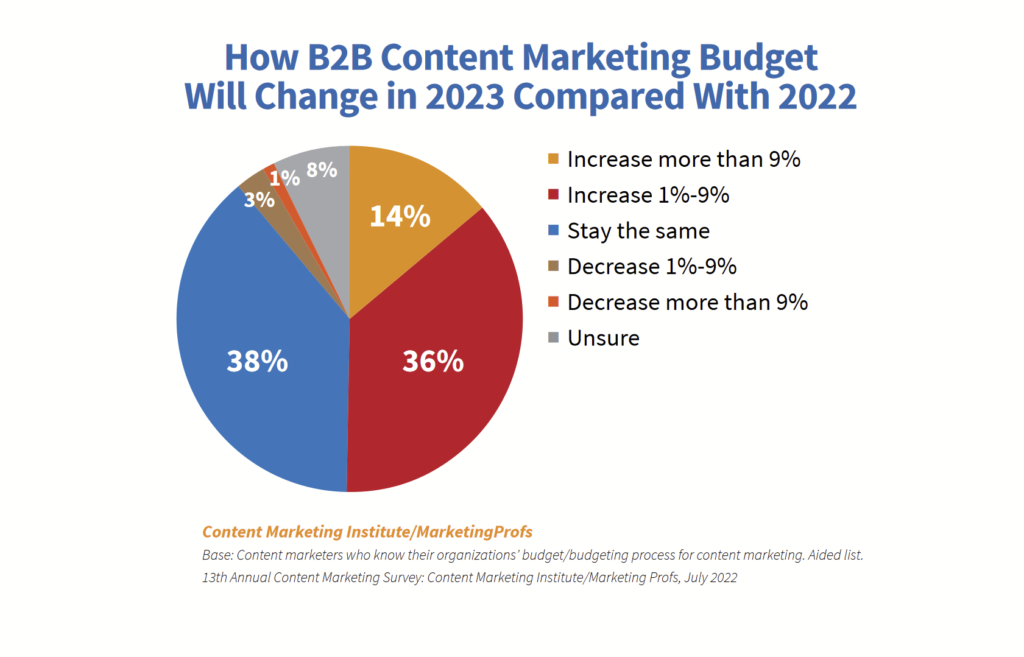
So, establish how much you can spend on content marketing. Include content creation expenses, promotion expenses, paid ads, and reserve funds for visual content.
Creating and implementing a successful content strategy that brings results takes time and effort. But you have listed above what are the steps of a content strategy to put in place a solid foundation.
Frequent Asked Questions
The main purpose of content strategy is to create the right content to attract the right buyer persona at the right moment of its buyer journey. Its mission is to create valuable content that solves the clients’ problems while attracting them to buy the business’s products and services.
Yes, content strategy is a complex task. It is for sure hard for someone that is just starting with this activity or for a business owner that sees it as just another burden on his plate and has no idea how to solve it. Content strategy involves a variety of skills like content marketing, content writing, SEO, social media marketing, researching, and budgeting among others.
The content strategy deliverables are the buyer personas, the buyer’s journey, content audit, keyword research, content mapping, competitor analysis, editorial flow, editorial calendar, content distribution plan, and budget.
Since content strategy is tailored for each business, there is no one-fits-all strategy. Each business will have its own definition of the best content strategy. But in general, the best content strategy is the one that helps the business reach its goals in the defined timeframe with the minimum costs.
The 3H concept – Hero, Hub, Hygiene – was initially launched by Google as a strategy for YouTube, but it’s perfectly applicable to any content strategy. The 3H content strategy is a model that helps businesses create helpful content, a cohesive and authoritative brand, and ultimately attract sales. It involves creating three types of content – hero (outstanding content pieces like case studies, white papers, or webinars), hub (pillar content like ebooks or long-form blog posts), and hygiene (short supporting articles).
